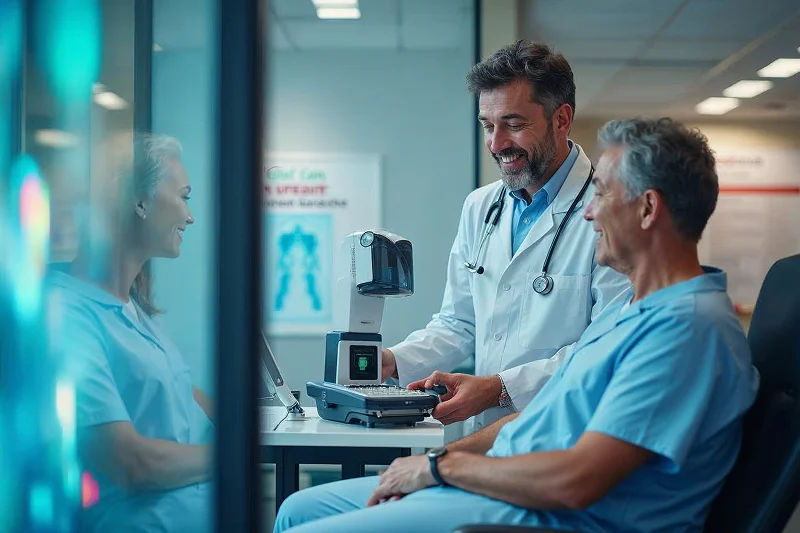Table of Contents
ToggleFrom Bumps to Breaks: The Essential Guide to Minor Injuries, Fractures, and Muscle Tears – When Urgent Care in Torrance is Your Best Choice
Hey there, Torrance folks, imagine you’re at a family barbecue in Wilson Park, and suddenly your kid takes a tumble while chasing a ball, clutching their ankle with tears in their eyes. Or maybe you’re a busy worker who’s just twisted your back lifting boxes at the office. Sound familiar? These everyday mishaps are part of life in our active community, but they don’t have to derail your day. That’s were Urgent Care Torrance steps in, offering fast, compassionate care for those nagging minor injuries without the long waits or hefty bills of an emergency room. In this in-depth guide, we’ll walk you through everything you need to know about minor injuries, fractures, and muscle tears, from spotting the signs to getting back on your feet. Backed by data from trusted sources like the CDC and the Bureau of Labor Statistics, this pillar resource is designed to empower Torrance residents, whether you’re a parent, athlete, or senior, to handle these common setbacks smartly and safely.
We’ll cover types, symptoms, home remedies, and when urgent care is the smart choice, plus prevention tips to keep you moving. Let’s dive in and turn those ow & ouch moments into quick recoveries.
Understanding Minor Injuries
Minor injuries are those everyday dings to bones, muscles, ligaments, or tendons that cause pain but aren’t life-threatening. In a bustling place like Torrance, with its beaches, parks, and sports leagues, these are all too common. The CDC reports that unintentional injuries lead to over 24 million emergency department visits annually in the US, many of which are minor and could be handled at urgent care (CDC, 2024). For kids, the stakes are high, about 2.3 million children under 15 visit EDs for unintentional injuries each year, with sprains at 27%, cuts at 15%, and contusions at 12% (CDC, 2025). Young adults and workers aren’t immune; the Bureau of Labor Statistics notes 2.6 million nonfatal workplace injuries in 2023, often sprains or cuts (BLS, 2024). Seniors face fall-related risks, with over 14 million such injuries annually (CDC, 2025). These stats highlight why understanding minor injuries matters, they heal with proper care but can worsen if ignored, leading to chronic pain or longer recovery. Urgent care bridges the gap, providing diagnostics like X-rays and treatments without ER costs, which can hit $1,000–$2,000 for minor issues, per Aetna estimates (Aetna, 2025). For Torrance families, this means less downtime and more time enjoying our coastal lifestyle.
Common Types of Minor Injuries
Let’s get into the specifics of the injuries you’re most likely to encounter in Torrance’s active scene, supported by recent data from government and insurance sources.
Sprains
Sprains happen when ligaments stretch or tear, often in ankles, knees, or wrists. They’re the top injury for kids in sports, making up 27% of unintentional injuries in children under 15 (CDC, 2025). In Torrance, twisting an ankle on the uneven sand at Rat Beach or during a soccer game at Torrance High is common. Mild sprains cause swelling and pain, while severe ones limit movement. The CDC notes these are preventable with proper footwear, but when they happen, urgent care can provide braces and advice to avoid long-term issues.
Strains and Muscle Tears
Strains involve overstretched muscles or tendons, while muscle tears are more severe rips, causing sharp pain and weakness. The BLS reports strains as a top workplace injury, part of the 2.6 million nonfatal cases in 2023 (BLS, 2024). For young adults in Torrance, lifting heavy boxes in retail jobs or overdoing it at the gym can trigger these. Kids get them from sudden sprints in playground games. A 2024 study from the University of Helsinki shows overuse in youth sports boosts strain risk by 20–30%. Home rest helps mild cases, but urgent care assesses tears with ultrasounds to rule out complete ruptures.
Urgent care not only offers medical assistance for minor injuries it also offers rehabilitation services.
Fractures
Fractures are bone breaks, from hairline cracks to full snaps. Seniors are at high risk from falls, with the CDC reporting over 14 million fall-related injuries annually and a death rate of 69.9 per 100,000 in 2023 (CDC, 2025). Children often have greenstick fractures (partial breaks) due to flexible bones, accounting for 5% of pediatric injuries (CDC, 2025). In Torrance, these occur from skateboard falls at McMaster Park or slips on wet beach paths. Insurance data from Aetna shows ER costs for fractures average $750–$1,000, while urgent care handles them for $125–$175 (Aetna, 2025). Urgent care uses X-rays to confirm and cast, speeding recovery.
These types underscore the need for prompt care to prevent complications like improper healing.
Symptoms and Causes
Symptoms across these injuries include pain, swelling, bruising, and reduced mobility. For sprains, you might hear a pop with immediate swelling; strains bring tenderness and cramps; fractures cause sharp pain, deformity, or inability to bear weight. Causes are often sudden twists (sprains), overexertion (strains), or impacts (fractures). In Torrance, sports like tennis or running contribute, with BLS data showing repetitive motions in jobs leading to strains (BLS, 2024). Seniors’ falls, per CDC, are due to balance issues or home hazards, with 70% of nonfatal injuries from falls (CDC, 2025). Kids’ flexible bones make fractures less severe but still painful. Watch for numbness or worsening pain, as Johns Hopkins advises these signal nerve or vessel damage. Understanding these helps decide on urgent care, where costs are lower, UnitedHealthcare notes ER visits for minor injuries average $1,000+, vs. $150 for urgent care (UnitedHealthcare, 2024)
Home Management for Minor Injuries
For mild injuries, start with RICE: Rest the area, Ice for 15–20 minutes every hour, compress with an elastic bandage, and elevate above heart level. OTC pain relievers like ibuprofen reduce inflammation but check with a doctor for kids. Clean cuts with soap and apply antibiotic ointment to prevent infection. Recovery timelines: sprains 2–6 weeks, strains 1–4 weeks, minor fractures 4–8 weeks with immobilization. Aetna recommends monitoring for infection signs like redness or pus (Aetna, 2025). If symptoms don’t improve in 48 hours, seek professional care to avoid complications.
When to Seek Urgent Care vs. the Emergency Room
Urgent care is perfect for non-emergency injuries like closed fractures or sprains with swelling. The American College of Emergency Physicians recommends urgent care for pain with mobility but no deformity. ER is for open fractures, heavy bleeding, or head injuries. CDC data shows many of the 14.2 million injury ED visits in 2021 could be urgent care cases (CDC, 2024). Costs differ: Healthcare.gov estimates ER visits for minor injuries at $1,000–$2,000, urgent care at $100–$175 (Healthcare.gov, 2025). In Torrance, urgent care’s convenience means faster treatment, reducing recovery time.
Benefits of Urgent Care in Torrance for Minor Injuries
Urgent care in Torrance provides wait times of 15–30 minutes vs. ER’s 2+ hours, per Aetna (Aetna, 2025). Costs are lower—$100–$175, and hours extend to evenings/weekends for busy families. On-site X-rays and on-site rehabilitation in Torrance like occupational therapy ensure full recovery, preventing re-injury. For Torrance athletes or seniors, this means personalized plans, from braces to exercises, supported by BLS data on workplace recovery needs (BLS, 2024).
Prevention Tips for Minor Injuries
Warm up before activities, wear proper gear, and build strength gradually. Hydrate and eat calcium-rich foods for bone health. For seniors, install grab bars to prevent falls (CDC, 2025). Kids should learn safe techniques in sports. Regular check-ups catch issues early.
Minor injuries are part of people’s life in Torrance, but with knowledge and urgent care, recovery is swift. From sprains to fractures, understanding symptoms and prevention keeps families active. Choose urgent care for efficient, affordable treatment, what will you do to stay injury-free?
FAQ’s
Look for pain, swelling, deformity, or inability to move the limb. These suggest a possible fracture, like a greenstick break common in kids. Seek urgent care for an X-ray to confirm and start treatment.
Yes, urgent care uses ultrasounds to assess muscle tears and offers rest plans or braces. Mild tears heal with guided care; severe cases may need specialist referrals for complete recovery.
Sprains heal in 2–6 weeks with RICE (Rest, Ice, Compression, Elevation). Persistent swelling or pain after 48 hours means it’s time to visit urgent care for evaluation.
A strain with a popping sound, severe pain, or weakness signals a possible tear. Urgent care can assess with physical exams or imaging to ensure proper treatment.
Yes, urgent care costs $100–$175 for fracture care, compared to $1,000+ in ERs. X-rays and casts are handled on-site, saving time and money.
Use proper gear like helmets, ensure warm-ups, and train gradually. Teach safe sports techniques and hydrate well to reduce sprains or fractures during playtime.
Urgent care quickly handles cuts needing stitches, cleaning the wound and closing it to prevent infection. Most visits take under an hour, ensuring fast recovery.



